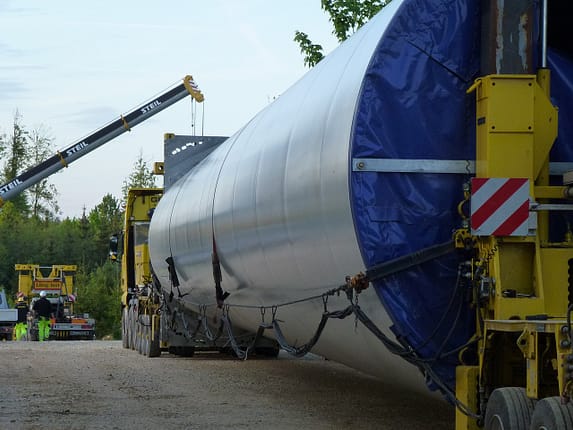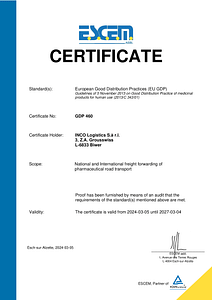Oversize transport in logistics refers to the transport of goods or vehicles that exceed the usual standard width of roads or other traffic routes. In many countries, road infrastructures are designed for certain standard widths for vehicles to ensure smooth traffic flow and safety on the roads. Such transport is therefore particularly challenging, as the wider goods or vehicles require special arrangements and permits to be able to transport them legally and safely.
Typical examples of goods or vehicles that can be considered as overwidth transport are:
Industrial plant and machinery: large machinery, plant components or entire production facilities that cannot be transported on conventional roads without additional precautions due to their width.
Modular building components: Prefabricated modular building parts such as bridge segments, hall elements or modular houses that require special transport solutions due to their width.
Wind turbines: Rotor blades, tower segments or other components of wind turbines that can be considered excess width transport due to their dimensions.
Ships or ship sections: Parts of ships or ships that have to be transported overland from one port to another and that require special transport solutions due to their width.
Overbreadth transport requires careful planning u
What are the effects of excess width transport on road traffic and infrastructure?
Oversize transport can have a significant impact on road traffic and infrastructure. Due to the special dimensions and size of the transported goods or vehicles, special precautions and precautionary measures are required to ensure the smooth running of the transport and the safety of all road users. Here are some of the main impacts of an oversize transport operation:
Traffic congestion: Overbreadth transport can significantly affect traffic flow, especially on narrow roads or in urban areas. The wider load often requires more space on the road and can cause other vehicles to slow down or wait to allow the oversize transport to pass.
Temporary road closures: In some cases, roads need to be temporarily closed to allow safe passage of the overwidth transport. This can lead to traffic disruptions and diversions that need to be planned and coordinated by the authorities.
Infrastructure load: The infrastructure, such as bridges, road edges, traffic signs and traffic lights, can be stressed or damaged by the oversize transport. Therefore, possible loads must be assessed before transport and, if necessary, precautions must be taken to avoid damage.
Road safety: The safety of all road users is of great importance. Oversize transport can increase the risk of accidents.
What is the role of escort vehicles or escorts in an oversize transport?
Escort vehicles or escorts play a crucial role in an oversize transport as they are essential for the safety, traffic flow and coordination of the transport. Their main task is to accompany the oversize transport and warn other road users to minimise potential hazards. Here are some of the main functions of escort vehicles or escorts in an oversize transport:
Traffic guidance and warning: escort vehicles or escorts usually drive in front or behind the MPV to warn other road users and regulate the traffic flow. They use special signals such as flashing warning lights, signs or lights to indicate the wider load and to make other vehicles give way or wait until the transport can pass safely.
Securing intersections and junctions: At intersections or junctions, escort vehicles or escorts often take over traffic control to ensure that the overwidth transport can turn safely and that other road users are not endangered.
Monitoring the load: Escort vehicles or escorts continuously monitor the load of the MPV to ensure that it is properly secured and does not pose a hazard during transport.
Communication with the authorities: The escort vehicles or escorts are in constant contact with the authorities to keep them informed of the current situation.
Oversize transport
Oversize transport in logistics refers to the transport of goods or vehicles that exceed the usual standard width of roads or other traffic routes. In many countries, road infrastructures are designed for certain standard widths for vehicles to ensure smooth traffic flow and safety on the roads. Such transport is therefore particularly challenging, as the wider goods or vehicles require special arrangements and permits to be able to transport them legally and safely.
Typical examples of goods or vehicles that can be considered as overwidth transport are:
Industrial plant and machinery: large machinery, plant components or entire production facilities that cannot be transported on conventional roads without additional precautions due to their width.
Modular building components: Prefabricated modular building parts such as bridge segments, hall elements or modular houses that require special transport solutions due to their width.
Wind turbines: Rotor blades, tower segments or other components of wind turbines that can be considered excess width transport due to their dimensions.
Ships or ship sections: Parts of ships or ships that have to be transported overland from one port to another and that require special transport solutions due to their width.
Overbreadth transport requires careful planning u





